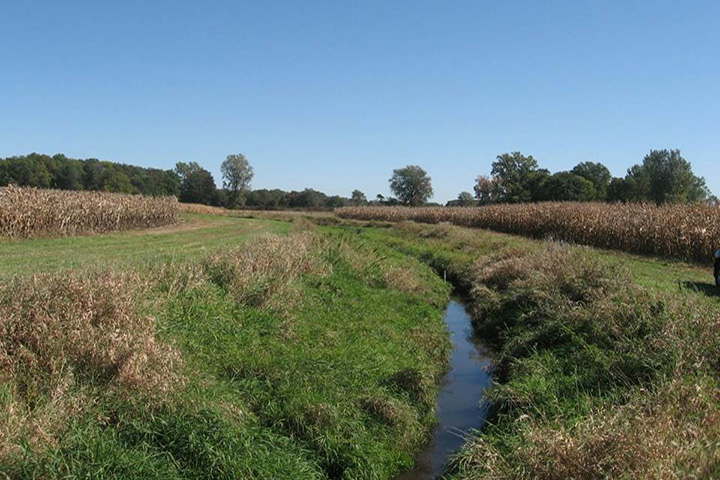Assessment of the two-stage ditch and drainage water management practices in the Western Lake Erie Basin
Assessment of the two-stage ditch and drainage water management practices in the Western Lake Erie Basin
Assessment of the two-stage ditch and drainage water management practices in the Western Lake Erie Basin
Program: Water Center Great Lakes Grants
All Water Center Great Lakes Grants projects »

Two stage ditch. Photo by Jennifer Tank
Investigators
Sheila Christopher, University of Notre Dame
Jennifer Tank, University of Notre Dame
Scott Sowa, The Nature Conservancy
Additional Core Team Members
Gust Annis, Kimberly Hall, and Matthew Herbert, The Nature Conservancy
Jeff Arnold and Kevin King, USDA-Agricultural Research Service
Jane Frankenberger, Purdue University
John Witter, The Ohio State University
Project Summary
The Western Lake Erie Basin (WLEB) is intensively farmed and the region is dependent upon managed drainage practices, e.g., tile drainage, channelization, to ensure productive agriculture. However, these drainage practices also facilitate the delivery of excess nutrients and sediments to Lake Erie, which have been linked to recurring algal blooms, subsequent hypoxia and associated ecological problems.
This project focuses on two relatively new best management practices (BMPs), the two-stage ditch and tile drain management. When used in tandem, these two BMPs provide great promise for improving water quality, but their efficacy has been tested only using field- and reach-scale implementation.
This project is evluating the effectiveness of the two-stage ditch coupled with field-scale tile drain management in improving water quality in the WLEB using the Soil Water Assessment Tool (SWAT) model. The multi-disciplinary project team is parameterizing the model, evaluating multiple management scenarios and incorporating the practice input parameters into the SWAT modeling guidebook. This work builds on an ongoing USDA-CEAP (Conservation Effects Assessment Program) project in the WLEB. The CEAP project already has built-in infrastructure for communication between the project team and key stakeholders, which facilitates incorporation of feedback throughout each step of the modeling process, ultimately ensuring the incorporation of scientifically-based principles into their land-management decision-making.